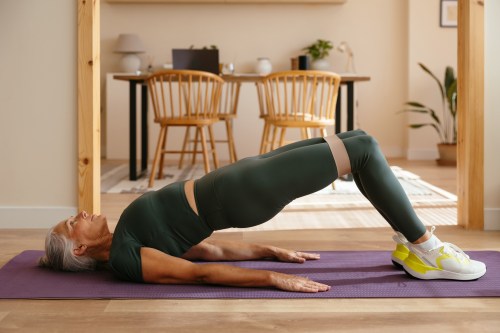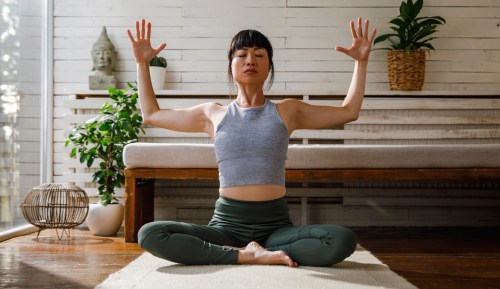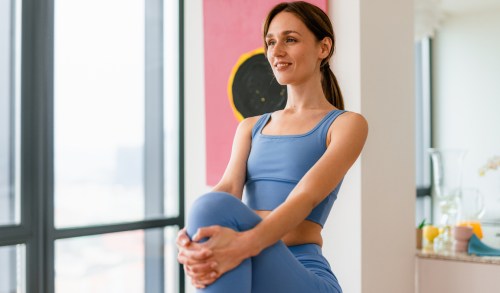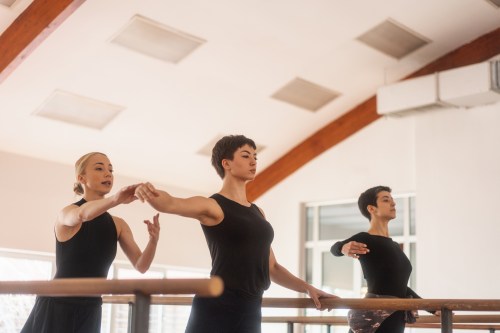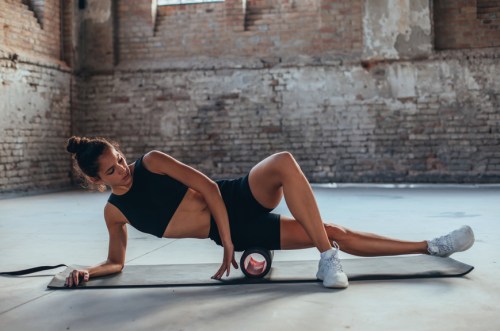How to Foam Roll Your Hip Flexors
If your hips feel tighter than a jar of pickles that just won’t open, it’s probably time to show your hip flexors some love.
If your hips feel tighter than a jar of pickles that just won’t open, it’s probably time to show your hip flexors some love.
These little muscles in the front of your hips work overtime whether you’re walking, running, or (let’s be real) sitting for hours behind a desk. When these muscles get too tight, they have a tendency to pull on your pelvis, throwing your alignment off and making movement feel stiff and restricted, according to celebrity trainer and fitness coach Kollins Ezekh, CPT. (Not to mention causing not-so-fun symptoms like lower back pain and poor posture.)
Cue foam rolling. Think of it like a deep tissue massage, but without the awkward small talk. It helps to break up knots, improve blood flow, and tell your hip flexors to chill out. When you foam roll your hip flexors for even just a few minutes, you can loosen things up and move more freely–whether that’s crushing a workout or just getting up from your couch without groaning.
So, if you want to feel less like the Tin Man and more like a well-oiled machine, grab a foam roller and give those hip flexors some TLC. Your hips (and lower back) will thank you.
What are your hip flexors?
Your hip flexors are some of the most important muscles in your body because they help control nearly all of your lower-body movements. They’re responsible for lifting your knees and bending your hips, and include a group of smaller muscles including the psoas muscle, tensor fasciae latae (TFL), iliacus, and rectus femoris.
When you’re performing actions like walking, running, jumping, or even just standing upright, your hip flexors are hard at work. And for athletes and active individuals alike, strong and flexible hip flexors are crucial for explosive movements like sprinting, kicking, and jumping.
“For runners or anyone who sits a lot, these muscles can get tight and cause issues if not taken care of,” says Ezekh. “They also play a key role in balance and stability, making them essential for both everyday activities and peak performance in sports.”
Simply put, your hip flexors are the powerhouse behind smooth, pain-free movement, so keeping them strong–and well-stretched–is a must.
Benefits of foam rolling your hip flexors
Foam rolling your hip flexors comes with plenty of perks, chief among them improving mobility and reducing pain.
“It helps release tension, improve mobility, and reduce soreness. I use it regularly because it keeps my hips feeling free and strong. It’s like a massage you can do anytime,” says Ezekh.
1. Relieves tightness and tension
Sitting for long periods or intense workouts can cause the hip flexors to tighten up. Foam rolling helps release built-up tension and loosen the muscles, improving comfort and flexibility.
2. Improves mobility and flexibility
Tight hip flexors can restrict movement, making squats, lunges, and even walking feel stiff. Foam rolling helps increase range of motion, allowing for smoother, more fluid movement.
3. Reduces lower back pain
When the hip flexors are tight, they can pull on the pelvis and contribute to lower back pain. Foam rolling helps ease this tension, promoting better posture and spinal alignment.
4. Enhances athletic performance
Flexible and mobile hip flexors allow for more efficient movement in activities like running, jumping, and lifting. Foam rolling pre-workout can help improve muscle activation, while post-workout rolling aids recovery.
5. Prevents Injuries
By keeping the hip flexors flexible and free of knots, foam rolling helps prevent overuse injuries and imbalances that can lead to strains or discomfort.
The Best Foam Rolling Exercises for Your Hip Flexors
“These stretches and foam rolling exercises are my go-to tools for staying pain-free and moving well,” Ezekh says. “If you’re dealing with tight hips or just want to feel better, give these a try. I promise, your body will thank you!”
Quad Roll
- Lie on your stomach with your legs extended and your arms supporting you in front. Place the foam roller above your knees.
- Use your arms for support as you roll the foam roller up and down the front of your legs along your quads.
- Slowly roll for 60 seconds.
Psoas Roll
- Lie on your stomach with your legs extended and your arms supporting you in front.
- Angle the roller to one side, placing it slightly above your right hip.
- Use your arms for support as you roll the foam roller around your lower core and hip bone, pausing on any tight spots.
- Slowly roll for 60 seconds per side.
Side Roll
- Lie on one side with the outside of your upper thigh resting on the foam roller.
- Keep your bottom leg straight, while the top leg helps support and control the amount of pressure.
- Start up at the hip, then roll down toward the knee, two inches at a time.
- Use your arms to help provide stability.
- Slowly roll for 60 seconds per side.
Trigger Point Release
Found some tight spots? Switch out the foam roller for a small ball (like a tennis or lacrosse ball). Place the ball on the specific knot and hold pressure while slowly moving around the area. “This one is tough, but it gets results fast,” Ezekh says.
Sign Up for Our Daily Newsletter
Get all the latest in wellness, trends, food, fitness, beauty, and more delivered right to your inbox.
Got it, you've been added to our email list.
